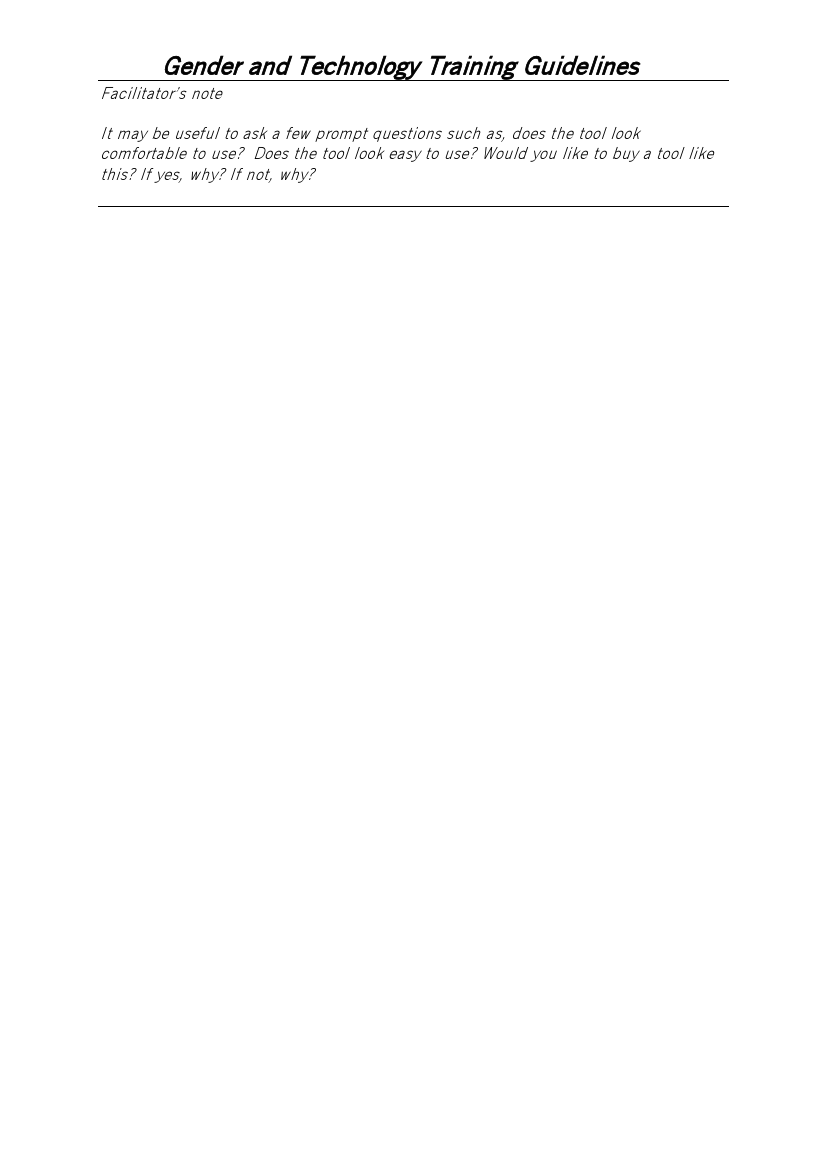
Gender and Technology Training Guidelines
Facilitator’s note
It may be useful to ask a few prompt questions such as, does the tool look
comfortable to use? Does the tool look easy to use? Would you like to buy a tool like
this? If yes, why? If not, why?
STEP 3
STEP 4
STEP 5
ACTIVITY 3
TIME
STEP 1
Reassemble in the large group and ask the groups to report back. On the
two sheets of paper write the key words which describe the things liked and
not liked about the tools.
Summarise by asking the participants to say if and how the tools look
different to things they see advertised on posters, on television, in
magazines?
Ask participants to think of how they could use their awareness of
aesthetics and ergonomics in their work on tool development?
IF I WERE A DESIGNER
30 - 45 minutes
Ask the participants to each choose a tool from the picture cards (more than
one person can choose the same tool) What would they do to it to make it
look more attractive, what would they do to it to make it more comfortable to
use? Ask they to sell the improved tool to another participant.
STEP 3
Stop the process after about 20 minutes and ask each participant to
“market” the improved tool they have acquired to the group as if they were
potential buyers.
STEP 4
Discuss the nature of these improvements. Ask the participants if they
think it would be possible to introduce design improvements in their work.
How did they feel re-designing the tools? Can anyone be a designer? If not,
why not?
STEP 5
Discuss the activity
* How did you feel about the activity
* Was it a challenge
* What did you learn
SESSION 5
Explain the sub-theme
* Designed for whom
* Who does design
* Whose needs are least recognised
WOMEN’S INDIGENOUS KNOWLEDGE
18